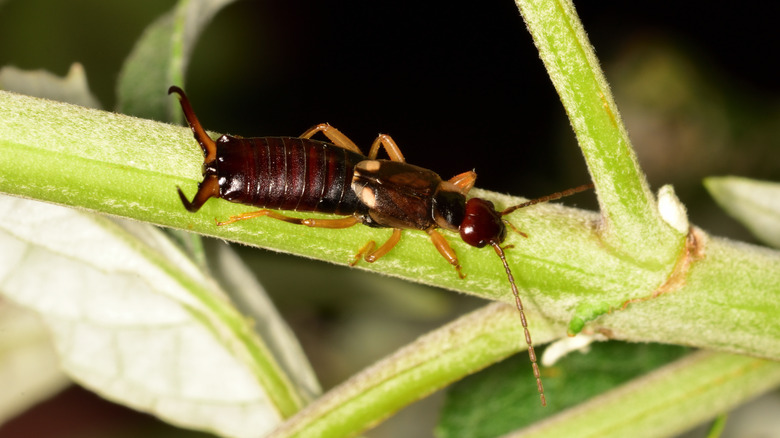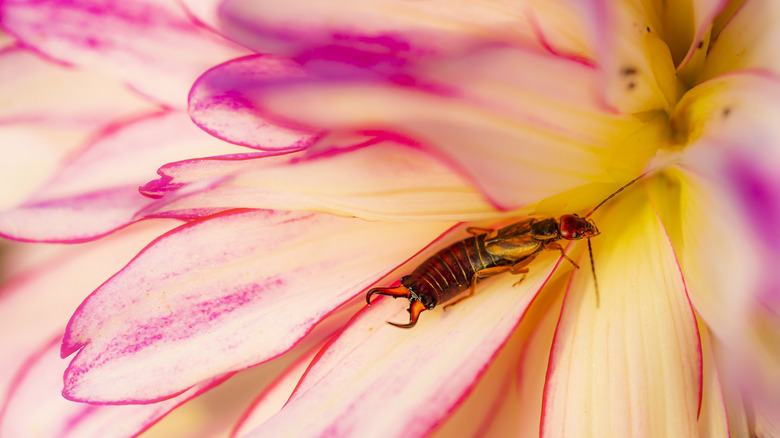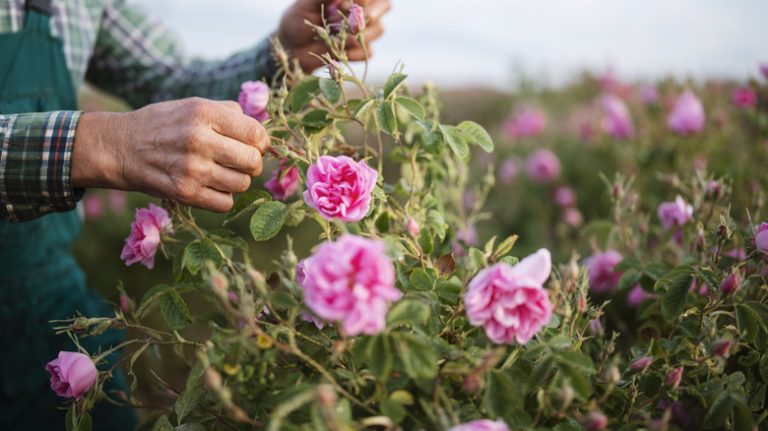In some areas, earwigs seem to be taking over the garden, causing damage in their wake. If your dahlias are struggling this year and you notice these nocturnal insects, take a few steps now to protect your plants, including creating a less hospitable environment for them. One trick to stopping them on their destructive path is to use Vaseline on the stems of your plants. This method will not harm your flowering plants, but it will protect them since earwigs won’t be able to make their way through the sticky, thick substance to reach the tasty leaves. Eventually, they will move on. There are a few other tricks to try, including one that uses an organza bag.
Earwigs may not be something you’ve heard of until you see them. About 22 species of earwigs are present in the U.S., most of which have a small, thin body that seems flat. They aren’t more than an inch in size overall and tend to be either black or brown. Though small and seemingly easy to ignore, earwigs can be problematic for many environments, and you may not see them because they are out in full force in the evening. However, you will notice a sticky, slimy substance along a path on the leaves and stems of your dahlias. If they’ve reached your plant’s leaves and petals, you may see small holes chewed away. They also tend to have a strong, foul odor to them.
Use Vaseline to keep the earwigs out of your garden

To keep earwigs out of your flowerbeds, make the space less attractive to them. They tend to munch and live on old leaves and other dead organic material, like twigs and debris. Keep your flowerbeds clear of this type of material so the pests are less likely to want to call it home. This will also help keep slugs, a common secondary pest, out. These pests enjoy dark areas where the ground is moist all of the time. Keeping the flowerbed a bit drier (without risking your plant’s health) could also help.
Then, purchase a container of Vaseline. Apply a very small amount to your fingertips and run it up and down the stem of the dahlias, making sure to start at the base of the stem and work your way up. The goal isn’t to create a goopy mess but to have enough material present so that the earwigs cannot get a grip on the stem to climb it.
With the less desirable area and the Vaseline, the earwigs are likely to move on to another location. However, reapplying the Vaseline every week or so during the summer can work as prevention from another infestation. This method works very well when there seem to be fewer pests present. If the problem is more severe, and you actually see the earwigs around, you may need to consider a more aggressive method to remove the earwigs to save your flowering plants.
Additional steps for earwig infestations in dahlia gardens

These pests are rather aggressive and hard to treat. If Vaseline isn’t working, or you want a secondary strategy, consider an organza bag. These bags have a drawstring, allowing you to place them over the dahlia’s blooms and tighten them just slightly at the base of the petals. The bag allows sunlight, moisture, and air to get into and out of the flower’s blooms but keeps the pests out. Utilize this method until the earwigs move on because they cannot access their source of food.
You may need some additional help with earwigs and slugs. Consider using a granular-based pest control product you can find at your garden center. This type of product helps to work as a pesticide without actually having to be put onto the plant itself. Instead, sprinkle it around the soil in the flowerbed around the plant. You can also find full pesticides that will treat earwigs. Make sure to read the label to see if they treat them.
Do you want a bit more of an aggressive method? You could arm yourself with a flashlight, a small cup, and some tweezers and head out at night to actually find the bugs as they travel along your plants for their next meal. Plucking and removing them from the area is a tedious task you’ll need to repeat a few nights to get good results, but it can be effective.
